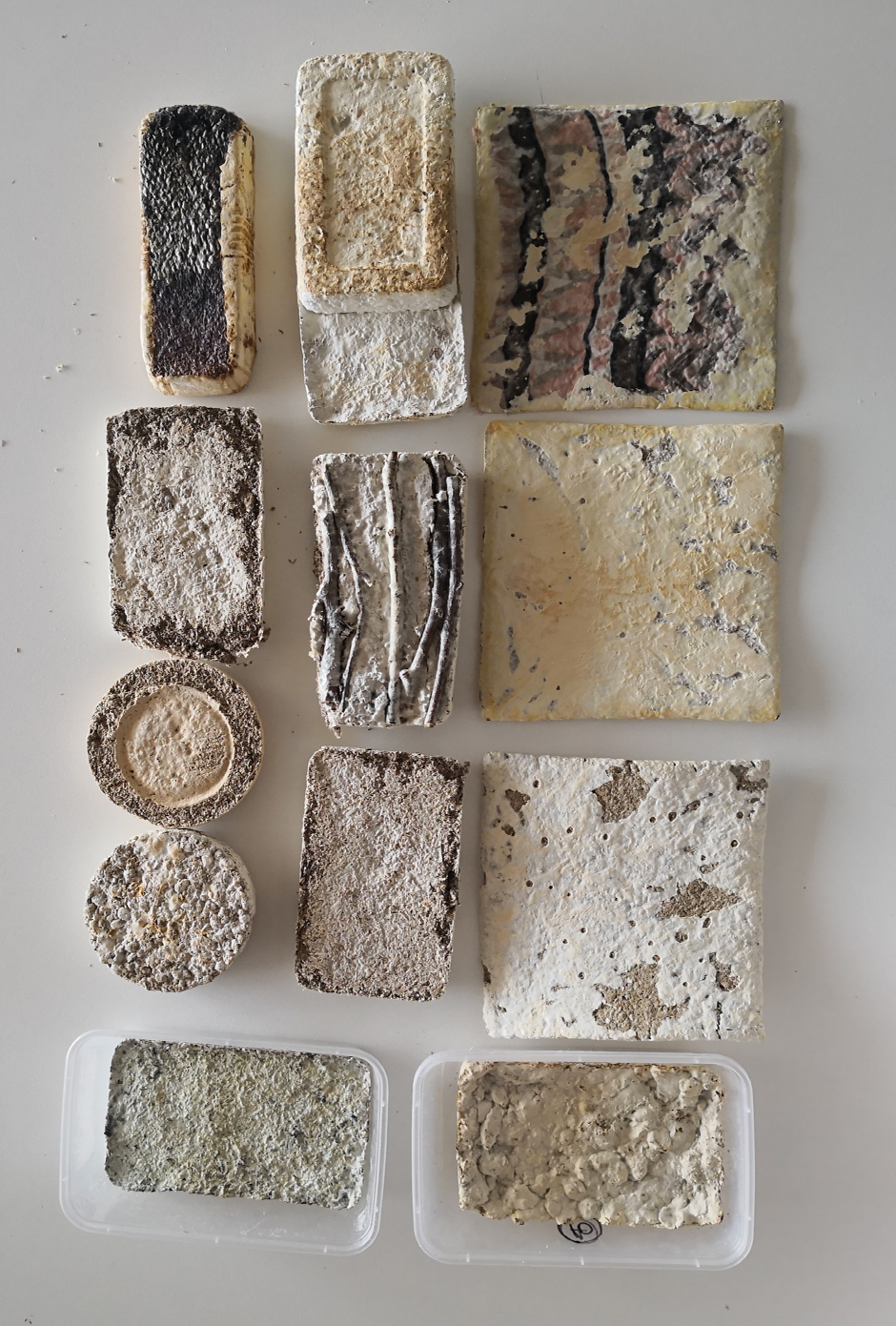Bio-Fabrication with Mycelium and Kelp
_
Michael Hornblow, Jacqueline Power, Jingwen Huo, Jie Jun Low, Hao Ouyang, Jared Pan, Wan Ping Tay + Eric Yong, University of Tasmania
Bio-design is an emergent and rapidly growing design paradigm that extends beyond biomimicry. Instead of simply being inspired by nature and its processes, bio-design incorporates living materials and processes into the design. As a result, the materials and the final design itself may be quite literally grown. Bio-design offers a process to harness biological organisms such as yeast, bacteria, fungi and algae. In this new way of designing and manufacturing, “Life is increasingly seen as the new frontier for exploitation; from industrial framing through in-vitro meat and bio-prospecting to synthetic biology, life is extracted from its natural context into the realm of the manufactured” (Catts and Zurr, 2013, p. 72). This presents opportunities for architects and designers to employ an extended palette of materials and engage in collaborations across disciplinary spheres.
The work on display has been produced by final-year 2019 Master of Architecture advanced design research students. In a unit that partners budding research students with research studio leaders, the research question and scope are developed in a team-based context. This work extends previous multi-disciplinary and collaborative research in bio-design by the academic leads that began with exploration of Symbiotic Colony of Bacteria and Yeast (SCOBY). The extended suite of materials has shifted in this iteration to focus on mycelium (mushroom) and kelp (an important local resource).
Mycelium and kelp have multiple benefits for the designer in terms of aesthetics, cost, sustainability, and various material performance capacities. Many examples of bio-fabrication in architecture focus on the finished output – the hero shot image of a completed design or artefact. The significance of this research and prototyping is the focus on de-mystifying the growing processes and the sampling needed to reach an end goal. The instruction manual outlines the steps for growing and testing the materials, in an attempt to share and allow others to join the burgeoning bio-fabrication community. The magnified photographs of the mycelium and kelp provide an insight into what takes place at a microscopic level. The work on display is a small portion of what was produced during the year-long material sampling and design ideation. Other outputs (not on display here) included physical samples, to enable the haptic qualities of the materials to be experienced; an Instagram account, with workshop photographs and videos of the process; and, a set of design guidelines to provide advice for use of the materials for producing a temporary biomaterial pavilion. Reference:
Reference:
Catts, O. and Zurr, I. 2013, ‘The vitality of matter and the instrumentalisation of life,’ Architectural Design, vol. 83, no. 1, pp. 70–75.
_
Dr Michael Hornblow_ is an adjunct senior lecturer at the University of Tasmania, as well as an interdisciplinary artist, independent curator and art manager.
Dr Jaqueline Power_ is an adjunct senior lecturer at the University of Tasmania, with research interests in the disciplines of interior architecture and product design.
Jingwen Huo_ is a newly graduated architect. She completed her Bachelor of Environmental Design and Masters of Architecture at the University of Tasmania.
Jie Jun Low_ is a Master’s graduate in Architecture. She completed her Bachelor’s and Master’s degrees at the University of Tasmania.
Hao Ouyang_ is a graduate architecture student at the University of Tasmania.
Wan Ping Tay_ is a graduate architectural student. She completed her Master in Architecture at the University of Tasmania.
Eric Yong_ is an architecture graduate. He completed his bachelors and master’s degrees from the University of Tasmania in 2019.
Image: Mycelium-composite growth tests, various substrates
